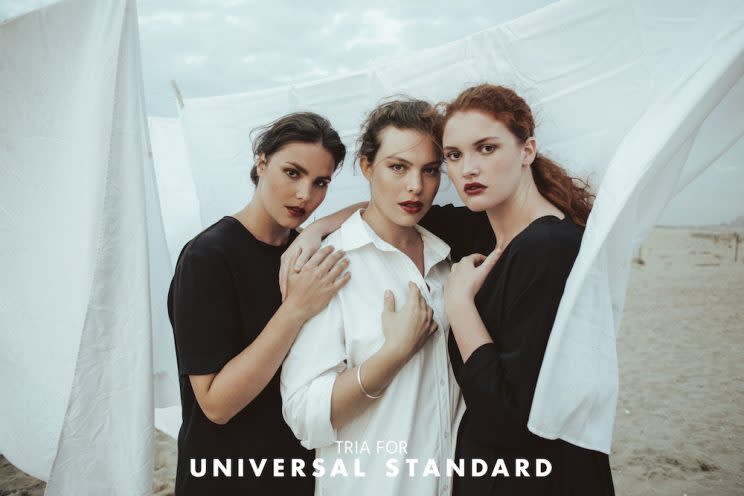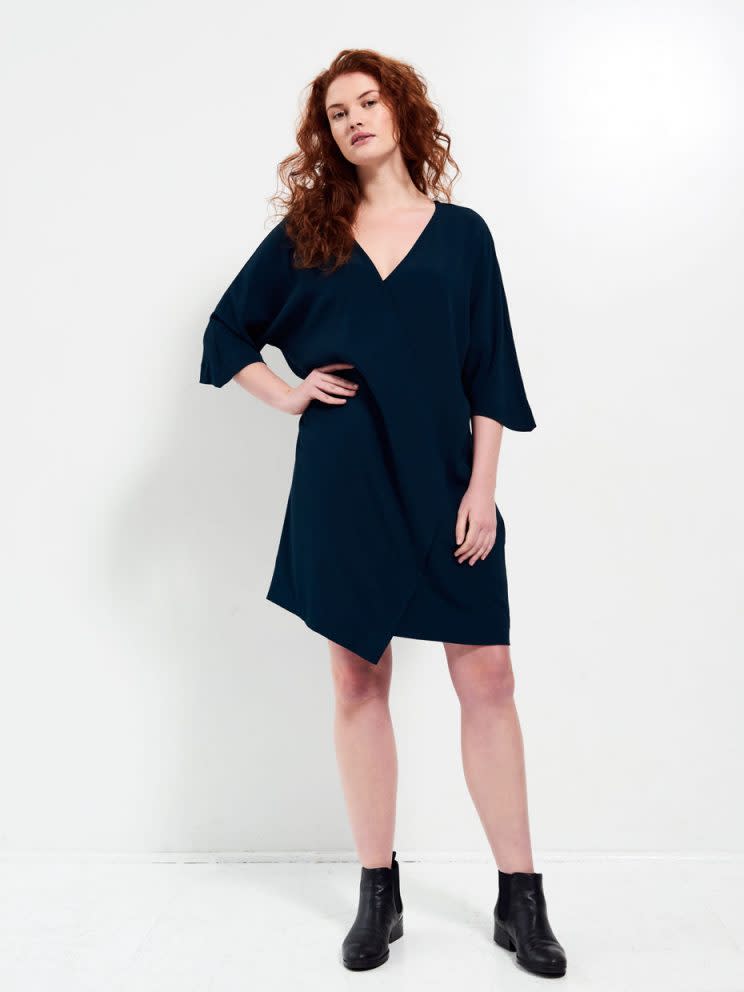Making the Case for a $90 Plus-Size T-Shirt

Inside the dimly lit basement of New York’s NeueHouse Madison Square, models Candice Huffine and Katy Syme beamed as they discussed their collaboration with online retailer Universal Standard. Huffine and Syme make up two of the three faces for the plus-size upstart’s new campaign, Tria for Universal Standard. (Absent from the meeting was model Georgia Pratt.)
The brand, which launched in 2015, started selling three new pieces on Tuesday, which were designed by and named after the model trio. Yahoo Style met with Huffine and Syme, as well as with one of US’s cofounders, Alexandra Waldman, to take a look at the new clothes and discuss the market for plus-size clothing.
The first thing that strikes you when you look at the clothes is that an “extra small” is actually quite large by industry standards — and that’s the point. Universal Standard sizes range from 10 to 28, beyond standard plus-size offerings, which typically stop at size 24.
Thumbing through the rack of Universal Standard’s clothes, the pieces seem, at first glance, minimalist and somewhat unremarkable. But a closer look reveals that the fabrics used are rather high-quality, making shirts like the Candice, a $90 “red carpet tee” with an asymmetrical shoulder cutout, come to life.

Outside of the Tria collection, the Thames Fog dress — a sheer, knee-length number — and the inventive Kanda Puffer jacket stand out as staples for anyone in the “cool girl club,” Huffine’s description for those who subscribe to the Universal Standard aesthetic.
For all the brand’s wins, there are fashion missteps too. Ignoring any normative adage that keeps larger women out of horizontal stripes, the Raquette cashmere sweater would benefit from a different cut; its loose fit makes it read more like prison uniform than polished pullover. To be fair, making a 100 percent cashmere sweater available to a size 28 is applaudable. That kind of luxury staple is normally reserved for standard-size women.
Speaking of luxe materials, US founder Waldman says that’s one of the reasons the clothes, which may strike some as expensive, are priced where they are — below a store like Theory but above ASOS Curve. Take, for example, a Theory dress, $355, which is similar to the Katy, $160. The Theory dress is made largely from triacetate and polyester, whereas the US Katy dress is viscose, an artificial silk, and elastane, which allows for some stretch in the garment. Of course, the real feat is that the Katy is available to girls who wouldn’t even be able to purchase the Theory dress no matter the price point, sized highest at a standard size large.

Plus-size shoppers have a hard enough time as is finding affordable options. In 2014, customers criticized Old Navy for pricing its plus-size clothing higher than its standard-size items, though the company defended itself, stating that it’s more costly to produce plus-size clothing.
To be sure, high prices aren’t even the biggest barrier to purchasing fashionable plus-size clothes. In-store availability and inconsistent sizing reflect an industry that has systemically kept plus-size women on the fringes.
Fast fashion retailer H&M is guilty of both. Last year, thousands on social media shared the story of a woman whose fitting room frustration peaked after trying on a pair of H&M jeans — at size 16, the largest size available in-store — that didn’t fit her traditionally size 14 hips. A few months after that, the Swedish company drew ire when it stopped selling plus-size clothing in 11 of its New York City locations. (The irony here is that Universal Standard’s campaign model Katy Syme appeared in an H&M advertisement alongside standard-size models seamlessly.)
Despite a $20 billion market opportunity, retailers are having a hard time servicing plus-size women. Universal Standard hopes to do just that, and fashionably so.
Alexandra Mondalek is a writer for Yahoo Style. Follow her on Twitter @amondalek.
Related:
The Ultimate French Brand A.P.C. Is Now Made in America
Uniqlo to Bring Back Coveted Uniqlo U Collection
Let’s keep in touch. Follow Yahoo Style on Instagram, Facebook, and Pinterest for inspiration delivered fresh to your feed, every day.

